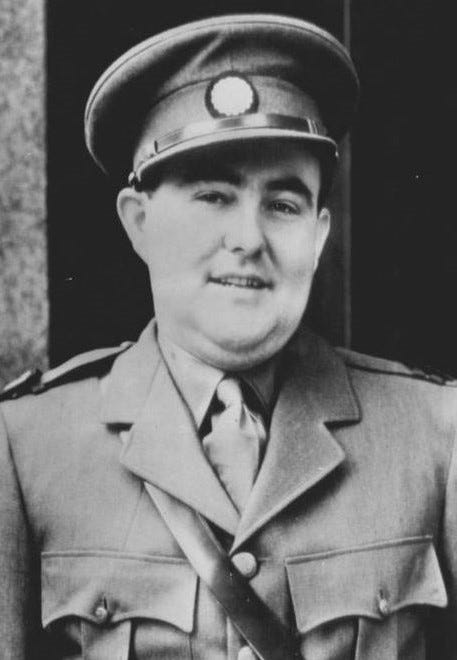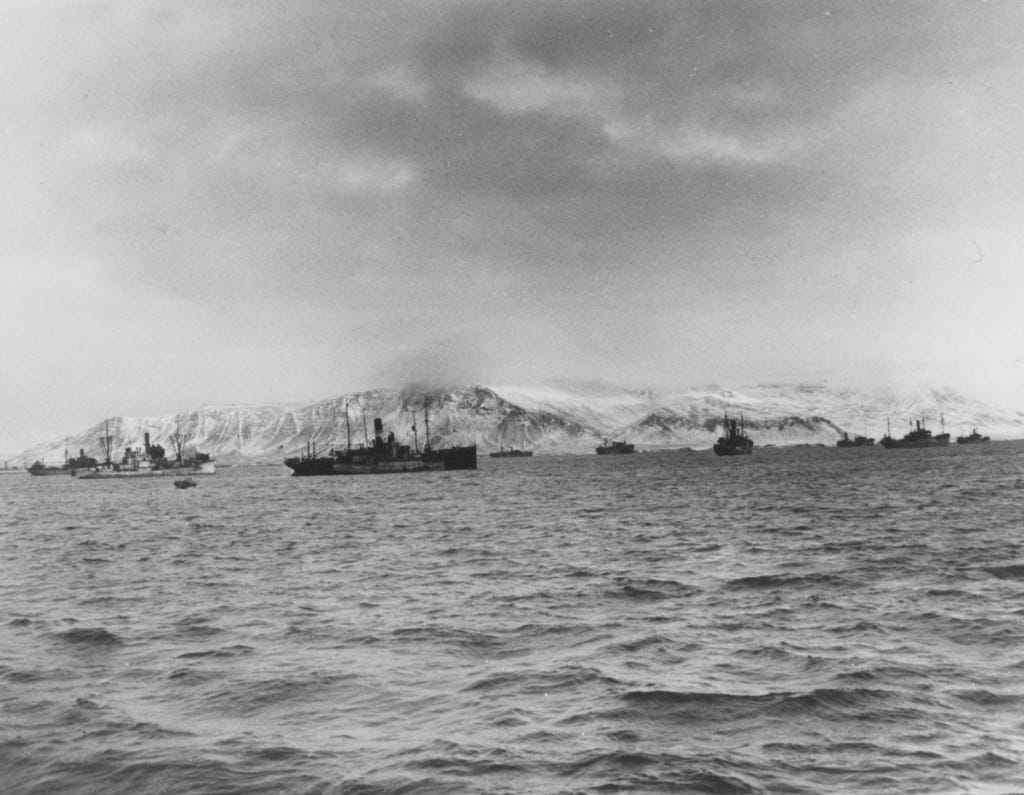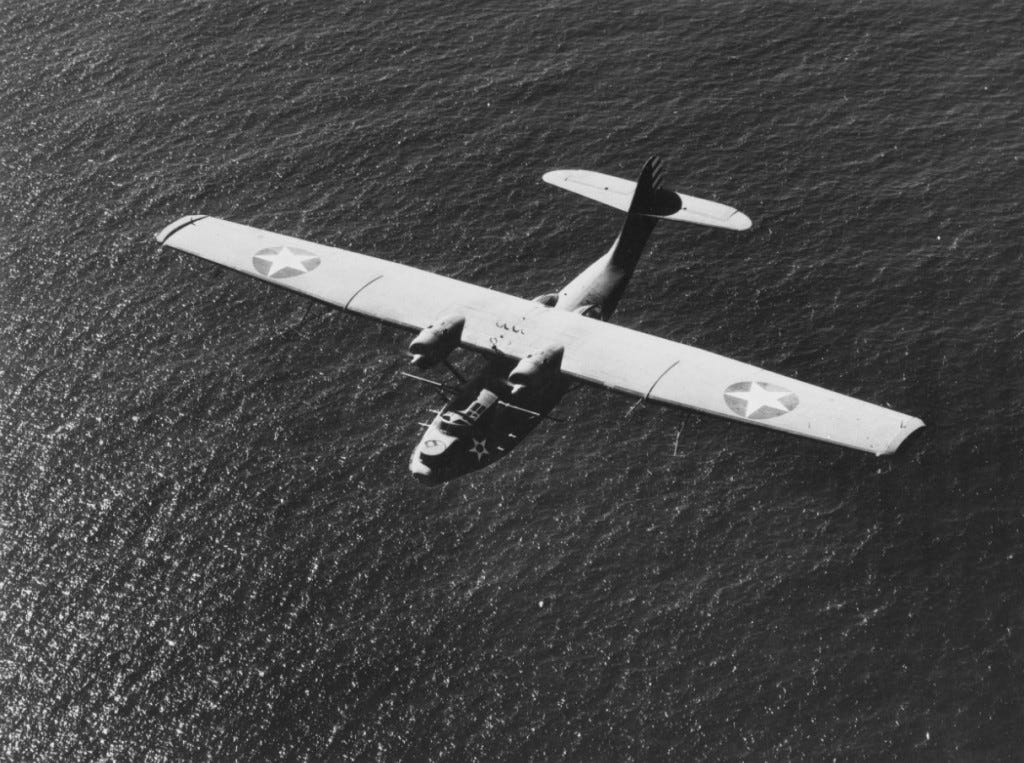'Greyhound' in real life: Covering the convoys
The Tom Hanks movie "Greyhound," released last week on Apple TV+, has the oft-overlooked story of World War II's Atlantic convoys back in the news. While Hanks' project is based on a novel, "The Good Shepherd" by C.S. Forester, both the 1955 book and the new film adaptation are deeply rooted in actual events -- events that were covered by the press at the time.
Correspondents crossing from North America to North Africa or England generally did so by ship, leading to firsthand accounts of the dangers of the Atlantic crossing. Reporters also sought out convoy-related stories even when they weren't using them for transportation, riding along with sub-hunting aircraft or patrol boats that escorted merchant ships and troop transports into and out of port.
Whether enduring a harrowing series of attacks like Capt. Ernest Krause and his crew in "Greyhound" or managing to evade the ever-present U-boats on an unscathed crossing, the correspondents usually emerged with a story to tell about an under-reported aspect of the war.

Associated Press correspondent Drew Middleton took to the seas aboard a British destroyer in the North Atlantic in December 1940, and his account might as well have been an excerpt from the "Greyhound" script.
A pinpoint of light winked on the horizon. A lookout bellowed. The captain muttered into the speaking tube to the engine room.
The light British destroyer on which I was taken for a North Atlantic submarine hunt swung over to port and vibrated with new life as her engines drover her ahead at 25 knots while waves broke over her bow and spray splattered her bridge, the funnels and the gun deck crews.
The captain, in wadded jacket and oil-skins, put down his glass and said wearily: "More survivors."
Middleton describes the ordeal of nine men from a Greek steamer that had been torpedoed by a U-boat, which then shelled the lifeboat as it moved away from the lost vessel.
Asked where the other 19 men on his crew were, the Greek captain "shrugged and spat expressively into the sea" before making his way below decks.
As he went below, the destroyer turned again to the unending chase of the elusive undersea raiders striking from Axis bases from the Arctic Circle to the Bay of Biscay in a drive to break the British lifeline.
The prime duty of the destroyer is to convoy merchantmen. She had just guarded one huge convoy far out into the Northern Atlantic and brought another, equally large, safe to port.
As these convoys plow through the sea, destroyers course like hunting dogs through the wind-whipped waves around them, watching through binoculars, listening through submarine detectors, checking reports of submarines from scouting airplanes. And on such duty, picking up survivors is an old story.
Middleton describes the men going three days with nothing to eat except sandwiches because the seas were so rough cooks couldn't prepare hot food. He writes of a 19-year-old crewman, typical of the men on board in his youth but also a veteran of the Dunkerque evacuation (as U.S. correspondents called it at the time).
The captain looks like Buck Newsom, the Detroit baseball pitcher; won the Distinguished Service Cross at Dunkerque; never quits the bridge while his ship is at sea; grabs an hour or two of sleep when he can, doesn't take time to shave, and lives on sandwiches and tea.
In May of 1942, Middleton's AP colleague John A. Moroso III chronicled his trip to Northern Ireland, a voyage fraught with tension. His dispatch began:
I have just crossed the Atlantic with a huge American convoy that outfoxed enemy submarines all the way.
We had to "push the periscopes down" almost all the way of our 2,400-mile voyage of daring and skill. The destroyers and planes delivered thunderous depth charge attacks.
In convoy work the job is to get the troopships through. You don't have time to investigate attacks or run the enemy down. You blast him when you think he is near and keep sailing.
The vicious explosions left no doubt in our minds that some more strangers would have breakfast in hell. I was five miles away but our ship shivered sharply from the blasts. We were near enough to the target to believe the submarine could not have escaped.
The ship on which Moroso was riding was not attacked at any point during the crossing, and the correspondent's report brimmed with positive energy about the state of the U.S. fighting man. Unable to offer any actual details about the mission, Moroso sings the praises of everything from the eagerness of the always-on anti-aircraft gunners to the quality of the troops' equipment and rations.
The value of our convoy and its ultimate effect on the war are like the operational details of our trip -- military secrets. But I am allowed to say that it was the largest yet to arrive here.
That August saw John R. Henry of INS join a U.S. Coast Guard cutter that was helping escort troop and cargo ships to an unnamed "semi-Arctic" destination.
Approval of this dispatch by naval censors marks the first disclosure that the one-time "five-fathom" Navy is now employed far from home shores to protect oceanic shipping routes in the crucial battle of the Atlantic. And they are doing a whale of a job of it.
Henry describes the critical moment of the cutter's passage, an encounter with a U-boat that saw that writer himself get involved in the fight.
It was exactly 9:03 a.m. when this cutter went into all-out action. A majority of the men were already topside. "Swab jockeys" were at work. The galley gang was peeling potatoes. Suddenly, a whistle shrilled an alarm.
The klaxon horn brought all aboard to general quarters. The "swab jockeys" dropped their mops and the galley gang put aside their potatoes. This correspondent went to work with the boys who manned the aft rack of depth charges.
Deck guns flash from both sides of the ship as depth charges roll into the water.
A familiar dull rumbling thud followed. Surface of the white-capped sea momentarily looked like gelatin, shaking in a bowl, then it was broken by geysers that spouted after each spot of explosion.
Another pattern of depth charges was dropped, then another. The stern of the ship, where I stood, shook and shuddered with each blasting vibration.
Only official Navy records say whether another U-boat was destroyed, but, I can say the Coast Guard did not lose the encounter.
Not all the sub-hunting work was done aboard ships. When convoys were closer to shore, precious air cover augmented the defensive screen. United Press correspondent Milton L. Carr flew with a Navy patrol in September 1942, jammed into the bombardier's compartment of a flying boat.
Again unable to get into too much detail thanks to censorship, Carr compliments the "teamwork of these U-boat hunters" as a "sight to remember."
There seldom is time for a second shot at a submarine. Success or failure of the attack depends upon the constant readiness of the crew and the coordination of their efforts during the encounter.
Riding along with bombardier Emerson Myers, Carr sees that "nothing in the water below or in the sky above" seems to escape his notice.
"Surface vessel 15 degrees off the starboard bow," he reported into the microphone strapped to his chest. Five minutes later I saw the object of his report, a tiny speck on the water several miles away -- an Allied warship.
Once we dived within a few feet of a disturbance on the surface which turned out to be a school of fish. Myers explained that the fish had created a wake resembling that of a submarine.
I asked Myers what fliers looked for on the water which betrayed the presence of raiders.
"Every man has his own particular technique," he replied. "You don't learn to fish and hunt game by reading a book about it or listening to what someone tells you. You learn by experience. The same thing is true in hunting subs. Every time you see one you learn something new about hunting 'em."






